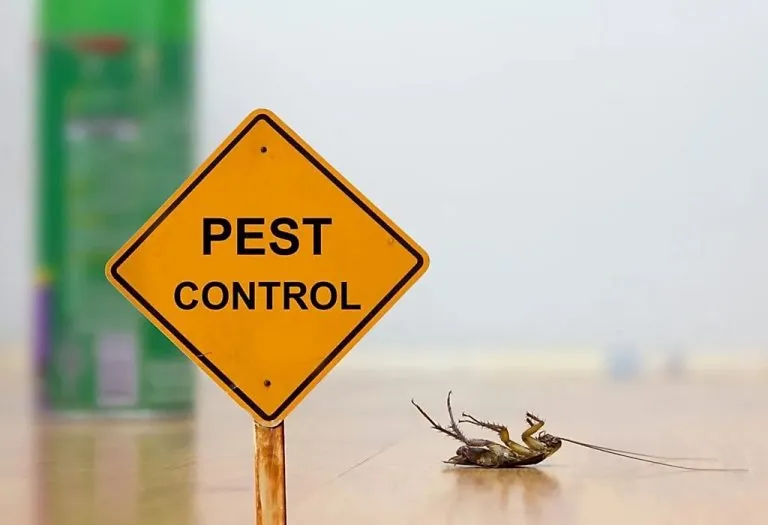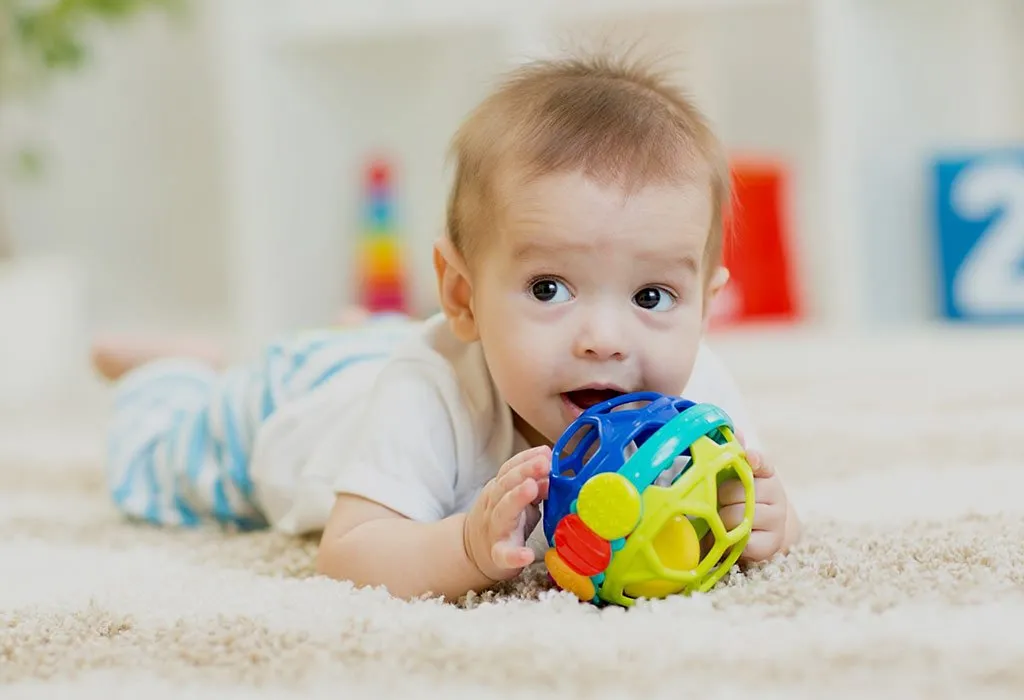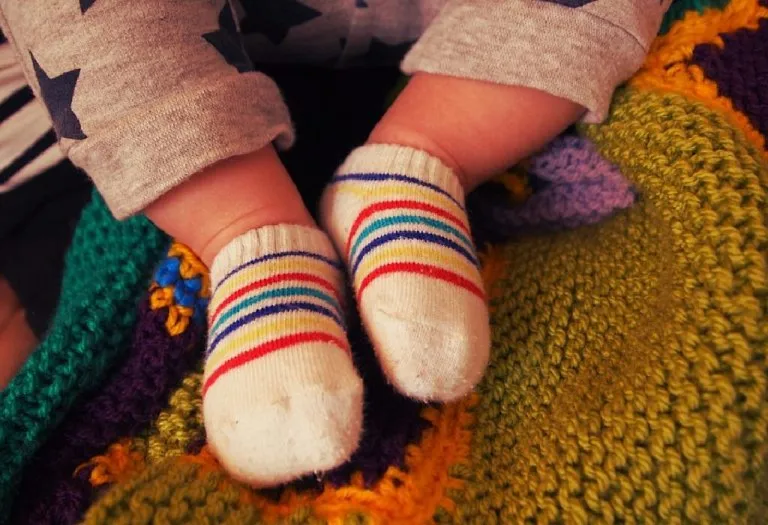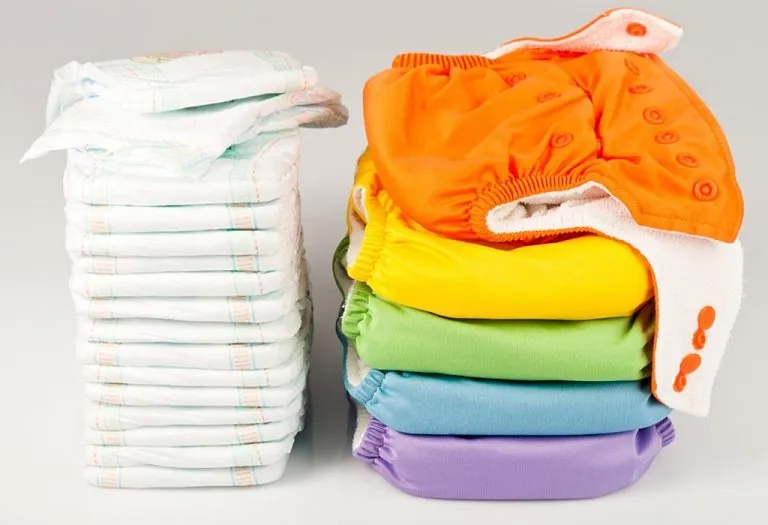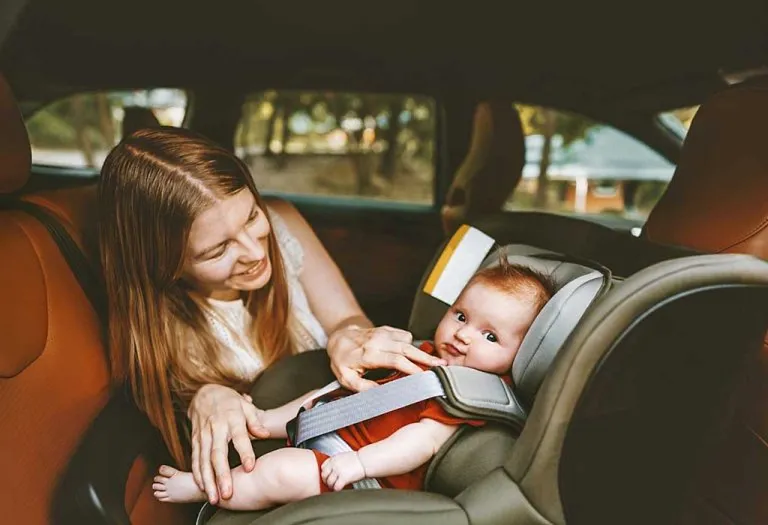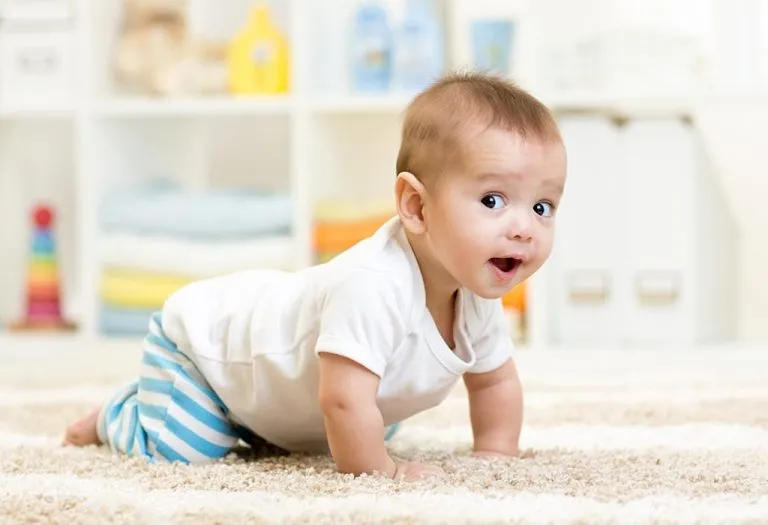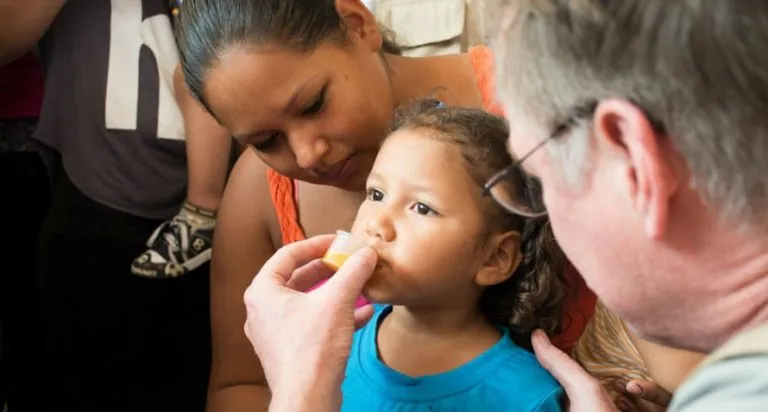Pest Control With a Baby Around – Is It Safe?

If pest control has been on your mind lately, but you have a baby in the house, you will have to be extremely careful. You may have questions like – Is pest control safe for babies? Pesticides come in many forms – bug sprays, weed killer, insect repellent, flea shampoo, rat poison are some of them. They are all dangerous for babies. Exposure to pesticides happens through skin contact, ingestion, or inhalation. Hence, it is suggested that you should keep your baby away for a minimum of two to seven days when pest control is being done. However, herbal pest control is considered safe for babies. But it is wise to keep your baby away. Read on to understand if it is safe to do pest control with a baby at home
Is Pest Control Safe for Babies?
Infants are prone to health problems as their immunity is low. Hence, the risk of being affected by the harmful effects of toxins is more. Pesticides are very strong and contain harmful chemicals. Some pesticides may even lead to learning disabilities, childhood cancers, and asthma in children. In order to minimise the exposure, vacating the house and moving to a local park when the treatment is being done is a precautionary measure that you can take as parents.
At the same time, you need to ensure that pest control is done appropriately because incorrect practices can lead to more issues. Let’s take a look at them.
Risks Associated With Wrong Pest Control Practices
When kids toddle around the house, you must opt for pest control services that are baby safe and child-friendly. Some risks with incorrect pest control practices are mentioned below:
- Some products are not environment-friendly and contain strong chemicals. These chemicals may harm the immune system of newborn babies as their tolerance level is extremely low.
- If pest control products are incorrectly and improperly labelled, it may be mistakenly consumed by infants and toddlers thinking it to be some edible product.
- There is also a high health risk associated with poor knowledge of natural pest-controlling methods. If babies put things lying around the house in their mouth, it may cause a major risk.
- A child may suffer from childhood cancer or learning disability if the dangerous effects of side effects are not considered.
- If you use home remedies and your child is exposed to the pesticide, it may cause health problems if inhaled or touched by the skin.
- If pest control products are used without proper ventilation, they can release toxic fumes or vapors that may cause respiratory issues, eye irritation, or other health problems, particularly in children and pets.
- Using outdoor pesticides indoors can create a risk of higher toxicity, as these products are often formulated to be stronger and longer-lasting. This could result in harmful indoor air quality and lingering residues that may impact the health of everyone in the household.
- Unauthorized or unqualified use of pest control products might lead to the use of restricted or banned substances, posing legal risks in addition to serious health and environmental hazards.
- Exposure to harmful chemicals in pesticides can potentially affect a baby’s behavior, causing irritability, restlessness, or sleep disturbances. This can impact a baby’s overall development and stress both the child and parents.
Tips to Minimise Risks of Pest Control on Infants
Certain tips regarding pest control with a baby in the house, if borne in mind, can help minimise the risk of pest control in infants.
1. Store Pesticides Out of Children’s Reach
To minimize risks, ensure all pest control products are stored in a location that is inaccessible to infants and young children. This means using high cabinets, lockable storage, or areas that babies cannot access.
2. Use Safety Latches on Cabinets
Install safety latches on any cabinet or storage area containing pesticides or pest control products. This extra level of security helps prevent curious infants from opening cabinets and accessing potentially harmful chemicals.
3. Follow Product Label Instructions
Always read and carefully follow the instructions on pesticide product labels before use. This includes recommended application areas, dosage, and safety precautions. Understanding the label helps ensure proper use and reduces the risk of accidental exposure to infants.
4. Ensure Child-Resistant Packaging
After each use, make sure the container is tightly sealed with child-resistant packaging. This precaution prevents infants from accidentally opening containers and being exposed to hazardous substances. If a container’s child-resistant feature is compromised, consider transferring the product to a safer container or replacing it.
5. Avoid Misleading Packaging
Never store pesticides or pest control products in containers that might be mistaken for food or drink. This reduces the risk of infants confusing the container for something edible, which can lead to accidental ingestion and poisoning.
6. Seek Professional Guidance
If you’re using a professional pest control service, ask any questions about safety, including the duration of treatment, precautions during and after treatment, and recommended cleaning procedures. This will help you understand when it’s safe for infants to re-enter treated areas and what steps you can take to further minimize risks.
7. Ensure Proper Ventilation
When using pesticides at home, ensure proper ventilation to reduce the concentration of potentially harmful fumes or vapors. Open windows, use fans, and take other steps to ensure fresh air circulation, keeping babies away from treatment areas until they are safe.
8. Choose Non-Toxic or Natural Alternatives
Whenever possible, opt for non-toxic or natural pest control alternatives that are safer for infants. Products made from natural ingredients or using mechanical traps can be effective while minimizing health risks to babies and the environment.
How to Choose a Baby Safe Pest Control Company?
Sometimes, premises are fumigated or disinfected before they are occupied. But is fumigation safe for babies? When looking for a pest control company, choose a company that uses baby-safe pest control methods. Here is what you should keep in mind when selecting a pest control company:
- Company employees should be trained and certified in the products they use before servicing your house.
- Do not compromise on the cost and hire a professional from a company that ensures baby-safe pest control.
- Ensure that the employees will use only child-friendly and natural pest control treatments while servicing.
- Do ask whether the company provides preventive steps if the babies are around.
- Ensure that you inform the company employees about the presence of a pregnant mother or newborn baby so that they do not allow them to inhale the pesticides.
FAQs
1. How long should I wait before bringing my baby back into a treated area?
The recommended wait time before reintroducing infants into a treated area can vary depending on the type of pesticide used, the concentration, and the method of application. Generally, it’s best to wait several hours and ensure proper ventilation before allowing babies back into a treated space. Always consult with the pest control professional for specific guidance.
2. Can pesticides affect breastfeeding mothers and their milk?
Certain pesticides contain chemicals that could potentially be harmful to breastfeeding mothers and may be passed on to infants through breast milk. If you’re breastfeeding, consult with your pest control provider and healthcare professional to understand any potential risks and necessary precautions to avoid exposure during pest control treatments.
If you have tried natural means or other things available in the market to get rid of pests, but nothing seems to work, you will have to go with pest control. Professional pest control companies use specialised equipment and measured amounts of pesticides to reduce health risks. Therefore, it is best that you opt for a professional pest control company that uses child-safe pest control products or keep your baby at a safe location till pest control is being done and the house is ready for your tiny tot to return.
References/Resources:
1. Liu. J, Schelar. E; Pesticide Exposure and Child Neurodevelopment (Workplace Health & Safety); National Library of Medicine; https://www.ncbi.nlm.nih.gov/pmc/articles/PMC4247335/; November 2014
2. Alkon. A, Gunier. R, Hazard. K, Castorina. R, et. al.; Preschool-Age Children’s Pesticide Exposures in Child Care Centers and at Home in Northern California (Journal of Pediatric Health Care); Science Direct; https://www.sciencedirect.com/science/article/pii/S0891524521002157
3. Roberts. J, Karr. C; Pesticide Exposure in Children (Pediatrics); National Library of Medicine; https://www.ncbi.nlm.nih.gov/pmc/articles/PMC5813803/; February 2018
4. Pesticides and Their Impact on Children; U.S. Environmental Protection Agency; https://www.epa.gov/sites/default/files/2015-12/documents/pest-impact-hsstaff.pdf
5. Protecting Children from Pesticides: Information for Parents; American Academy of Pediatrics; https://www.healthychildren.org/English/safety-prevention/all-around/Pages/Protecting-Children-from-Pesticides-Information-for-Parents.aspx
6. Sarwar. M, Lee. A; Indoor risks of pesticide uses are significantly linked to hazards of the family members (Cogent Medicine); Taylor & Francis Online; https://www.tandfonline.com/doi/full/10.1080/2331205X.2016.1155373; March 2016
7. Pesticides and Children; National Pesticide Information Center; http://npic.orst.edu/health/child.html
Heavy Metals in Baby Food
Checklist for Baby Proofing Your House
Safe & Unsafe Mosquito Repellents for Infants
Harmful Ingredients You Need to Look Out For in Baby Care Products
Was This Article Helpful?
Parenting is a huge responsibility, for you as a caregiver, but also for us as a parenting content platform. We understand that and take our responsibility of creating credible content seriously. FirstCry Parenting articles are written and published only after extensive research using factually sound references to deliver quality content that is accurate, validated by experts, and completely reliable. To understand how we go about creating content that is credible, read our editorial policy here.






